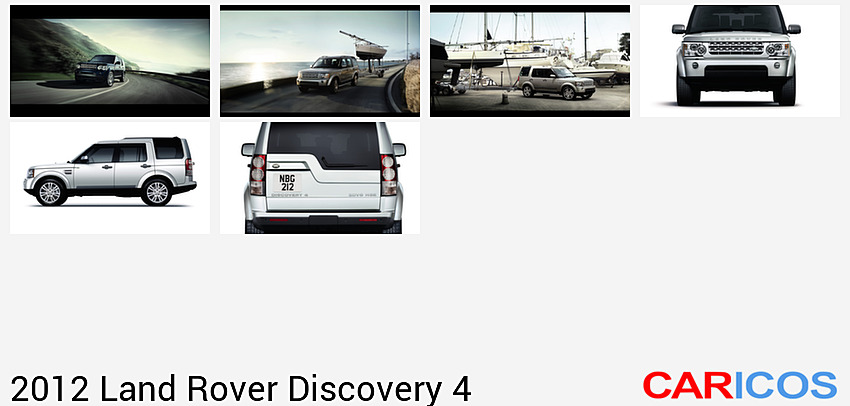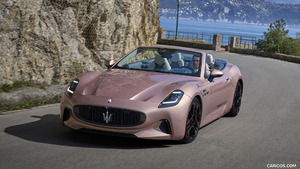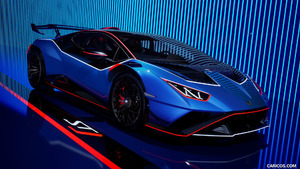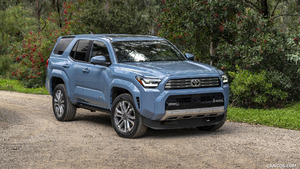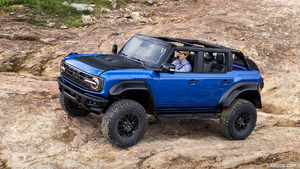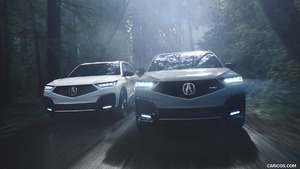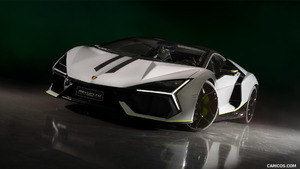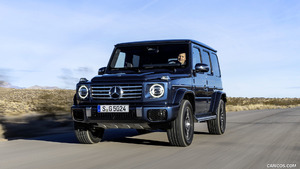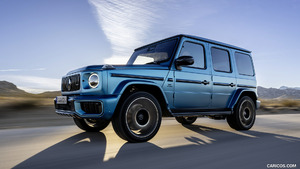2012 Land Rover Discovery 4
- Winner of 36 awards since launch in 2009
- CO2 emissions down from 244g/km to 224g/km on entry-level 3.0 LR-TDV6
- Power increased from 245PS to 256PS on higher power diesel and CO2 down to 230g/km
- New ZF 8HP70 automatic transmission comes with rotary gear shift selector and paddle shift
- Entry-level audio and navigation systems now compatible with Bluetooth, DAB & USB/iPod
- Premium Harmon Kardon LOGIC 7 now boasts 17 speakers and 825W of power
- Rear Seat Entertainment now available via WhiteFireTM wireless technology
- 'Say What You See' voice activation system
The outstanding 211PS 3.0 LR-TDV6 diesel remains the entry level choice for Discovery 4 customers in European markets conforming to EU5 emissions regulations. For 2012, the engine has been further improved with a reduction in CO2 emissions from 244g/km to 224g/km thanks to a low-flow fuel injection system and a new, highly efficient, ZF 8HP70, 8-speed automatic transmission.
This new 8-speed transmission benefits the high powered 3.0 LR-SDV6 with an increase in power output from 245PS to 256PS and helps drive down CO2 emissions from 244g/km to 230g/km.
In conjunction with the new transmission, the Discovery 4 is now equipped with the rotary gear shift selector and steering wheel-mounted paddle shift. All EU5 models are equipped with a diesel particulate filter (DPF), making them among the cleanest diesel engines on the market.
European markets and countries still conforming to EU4 regulations, will receive the existing 245PS version of the LR-SDV6 3.0, equipped with the ultra-refined 6-speed automatic transmission with command shift.
In addition to the driveline improvements, the Discovery 4’s design and equipment levels have been given a makeover too. There are two new alloy wheel designs, three new option packs and improved audio and navigation systems based on the latest MOST Gen 2.1 electrical architecture. The entry-level audio system has now been upgraded with a colour screen replacing the previous black and white unit and available with Bluetooth, DAB and USB/iPod connectivity. Also for the first time, the audio system is available with a non-navigation touch-screen. The new GEN 2.1 provides enhancements to the Premium Harmon Kardon LOGIC 7 system with an astonishing 825W of power through a 17-speaker system whilst the new ‘Say What You See’ voice command on premium systems allows the driver to use spoken shortcut commands.
"Improved performance, lower CO2 emissions and enhanced design and equipment levels, consolidate the Discovery 4's position as the most capable and versatile all-purpose vehicle on and off the road today. The Discovery 4 is quite simply in a class of its own," said John Edwards, Land Rover Global Brand Director.
An improved version of 3.0-litre diesel underpins Discovery 4 range for 2012
The 211PS version of the 3.0 LR-TDV6 was introduced in EU5 European markets in 2011 as the entry level choice for the Discovery 4. Now coupled to the ZF 8HP70 8-speed automatic transmission, the 211PS 3.0 LR-TDV6 produces 224g/km CO2 compared to 244g/km last year and continues to offer maximum power at 4,000rpm and 520Nm torque at 2,000rpm. Land Rover’s V6 diesel engine technology continues to appeal to a greater number of Discovery 4 customers with fuel consumption falling steadily once again, from 30.4 mpg to 33.4 mpg in 2012. The power of the 245PS version of the LR-SDV6 has been increased to 256PS at 4,000rpm and the CO2 emissions substantially reduced from 244g/km to 230g/km.
Maximum torque remains unchanged - 600Nm at just 2,000rpm. EU4 markets will continue to receive the 245PS version of the LR-SDV6 equipped with the existing 6-speed automatic transmission with command shift.
All versions of the 3.0-litre diesel engine are equipped with the same parallel sequential turbocharging system. Throttle response is staggering with maximum torque available from only 2,000rpm. The new 3.0-litre diesel can significantly out perform its rivals by delivering 500Nm in only 500 milliseconds from idle. This means drivers have instantaneous access to 83 percent of maximum torque. When it was introduced at 2010 model year, the parallel sequential turbocharging system was the first of its kind to be fitted to a V-engine anywhere in the world. The twin turbochargers work sequentially to provide best in class torque at low speeds and pack a huge punch at high speeds.
Driving a turbocharger requires pressure from the exhaust, creating pumping losses in the engine and increasing fuel consumption. To minimise this effect, valves isolate the secondary turbocharger both from the exhaust stream and the engine inlet tract when it is not required. A balance pipe connecting the two manifolds allows the gas from both manifolds to feed through the primary turbocharger. A variable geometry, medium-sized turbocharger is in use most of the time during average acceleration and up to motorway cruising speeds and performs with no discernible lag. It is a more efficient system than series turbocharging in which the smaller primary turbo increases pumping losses.
The 3.0-litre diesel set new standards of refinement and fuel economy at 2010 model year with its third generation common rail fuel injection system. Operating at 2,000bar, the piezo injectors are designed to minimise noise while optimising combustion. The system operates in ‘metering mode’ supplying just the right amount of fuel to the injectors rather than returning it to the tank and wasting pumping energy in the process. European market diesel models are now fitted with a DPF and have an advanced EGR system to reduce NOx. "The entry level version of the 3.0-litre engine ensures that Land Rover’s latest diesel technology is available to a greater number of customers. Both versions combine stupendous low end torque with high power, efficiency and the impressive levels of refinement Discovery 4 owners have come to expect," said Paul Walker, Chief Programme Engineer.
Emissions-busting ZF 8HP70 automatic gearbox
Fitted to EU5 versions of the 3.0-litre diesel engine, the remarkable ZF 8HP70 transmission delivers unrivalled response for driving pleasure while driving fuel consumption and CO2 emissions down to an all-time low. Eight speeds provide closer ratios and a greater overall ratio spread, while the higher overdrive ratio compliments the huge torque of the 3.0 LR-SDV6, reducing fuel consumption and CO2 emissions. Efficiency is further improved by the internal mechanical layout of the 8HP70 which means that no more than two internal clutches are open at any one time.
The 8HP70 is packed with energy saving features. The hydraulic actuating system is more efficient too, the hydraulic pump drawing less energy from the engine. The torque converter is calibrated to lock-up at lower speeds and operating temperature, reducing fuel consumption and once again taking advantage of the 3.0-litre diesel engine's immense low-end torque. Transmission Idle Control seamlessly and transparently selects neutral when the car is stationary and the engine idling in drive, reducing drag on the engine and saving fuel. The 8HP70 has brains too. In hot conditions it selects a lower gear to run the engine and air conditioning pumps faster to cool down the cabin quickly. In cold conditions it runs the engine faster to reduce warm-up time and emissions.
Apart from CO2-busting efficiency improvements, the 8HP70 offers performance benefits too. Taking just 200 milliseconds to complete the entire shift event, the 8HP70 gears change with an imperceptible interruption of torque for smoothness equalling that of a dual-clutch transmission, while providing a more sophisticated driving experience. The 8HP70 matches the engine speed to its turbine speed in anticipation of oncoming downshifts for an absolutely smooth transition from one ratio to the next. Closer ratios also contribute to making individual shifts smoother.
Driver Type Detection monitors driver inputs and the car’s systems to optimise the response of the gearbox to the driver’s style, while Curve Detection makes sure the gearbox avoids unwanted upshifts and holds on to the same gear when taking a sequence of bends. The gearbox also monitors the driver’s use of the brake together with the rate of deceleration to set up the correct gear for entry and exit to the corner. The 8HP70 does not have to change to a lower gear sequentially and can skip up to six ratios if necessary, for much faster response when preparing to overtake.
Driver controls include steering wheel paddles as standard enabling the driver to take control of gear shifting manually. The CommandShift lever is replaced by a rotary knob for selecting park, reverse, neutral, drive or sport modes, the last of these optimising the gearbox response times for maximum acceleration, improved response and sharper upshifts. The selector knob is flush with the centre console when the ignition is switched off, rising up when it is switched on. To avoid confusion, the Terrain Response Rotary Switch is replaced by a new Terrain Response Optimisation Switch. "The new 8-speed transmission is a perfect match for our 3.0-litre diesel engine. The additional ratios combined with skip shifts mean the engine is always working in the most efficient part of its operating range," said Paul Walker, Chief Programme Engineer.
Outstanding V8 engine continues to power the Discovery 4 range in 2012
The astonishing 5.0 LR-V8 naturally aspirated engine, designed specifically with Land Rover vehicles in mind, remains in the Discovery 4 line-up unchanged for the 2012 model year. The lightweight aluminium alloy engine is both super-efficient and compliant with the stringent US ULEV2 and European EU5 emissions regulations.
The 5.0 LR-V8 produces 375PS and 510Nm torque with low CO2 emissions of 328g/km. One of the secrets of the V8’s efficiency is the centrally-mounted, multi-hole, spray-guided fuel injection system delivering fuel at a pressure of up to 2175psi (150bar) directly to each cylinder. The injectors are positioned to deliver fuel precisely to the centre of the combustion chamber for maximum air-fuel mixing and accurate combustion control. The charge cooling effects of the direct injection system allow a high compression ratio of 11.5:1 which further improves engine efficiency. During the engine warm-up phase, the combustion system employs multiple injection mode strategies to deliver 50 percent more heat for fast catalyst warm-up and substantially reduced emissions.
A number of clever design features include the industry-first, torque-actuated variable camshaft timing on all four cams. Unlike conventional systems which rely on oil pressure, these are actuated by the positive and negative torques generated by the opening and closing of the valves, reducing energy consumption. Cam profile switching (CPS) selects either a profile suitable for low speed running or another which gives increased lift for high performance. This provides the Discovery 4 with exceptional low-end torque to negotiate demanding terrain and allows it to become fleet of foot when conditions allow.
Torque and power is also optimised by a variable inlet manifold which changes the length of its eight inlet tracts. The manifold switches between a 680mm inlet tract to provide high torque at low revs and a 350mm inlet path allowing maximum power at high revs. The precise position is optimised throughout the rev range at all times. The engine also features a unique reverse flow cooling system where coolant passes through the cylinder heads before the block. This allows the heads to remain cooler and the knock threshold is pushed further back for greater efficiency.
An oil to water heat exchanger also transfers heat from the coolant to the engine oil. These features promote faster engine warm-up for reduced emissions and enables the cabin to warm-up faster too. Frictional losses have been reduced by the use of Diamond-Like Carbon Coating (DLC) on some components, an intelligent oil pump pressure relief valve (PRV) to optimise oil pressure and the use of lower viscosity 5W-20 oil further reduces parasitic losses without compromising durability.
"The LR-V8 engine continues to justify its position as one of the finest engines in its class having set new standards for efficiency, power and torque that remain hard to beat. The combination of advanced technology and light weight make it the ideal power unit, complementing the Discovery 4's off-road and on-road capability," said Murray Dietsch, Director of Land Rover Programmes.
Superb 6-speed automatic transmission
The LR-V8 drives through the ultra-refined ZF HP28 6-speed automatic transmission. Its characteristics have been optimized by Land Rover engineers to provide the same class-leading response, with rapid and refined shifts. The superior power and torque characteristics of the engine make it possible to actuate the transmission’s lock-up clutches much earlier in each gear, reducing slip through the hydraulic torque converter, optimizing both fuel consumption and CO2 emissions.
Advanced chassis, suspension and brakes
The Discovery 4 suspension system was substantially revised for 2010 model year with changes to roll centres, anti roll bars, suspension knuckles, damper bushes and the addition of a variable ratio steering rack for greater stability during high speed cruising and increased sensitivity at acute steering angles. More powerful brakes comprised twin-piston sliding callipers with 360mm ventilated discs at the front and single piston with 350mm ventilated discs at the rear. The understeer control system, which intervenes by automatically slowing the vehicle to bring it back under driver control, was also revised. These features remain unchanged in 2012 for all versions of the Discovery 4.
Off-road ability remains top of the class for 2012
When it comes to off-road ability, Land Rover vehicles are acknowledged as setting the standards for others to follow with its acclaimed Terrain ResponseTM system. For 2011, two additional functions were added, Hill Start Assist and Gradient Acceleration Control.
Hill Start Assist retains the initial driver-generated brake pressure long enough for the foot to move from brake pedal to throttle without the car rolling backwards. The brake is released after a sufficient time has elapsed or when the engine is supplying enough torque to move the car up the hill. Hill Start Assist is always available, not selectable, and neither is its operation indicated to the driver.
Gradient Acceleration Control is designed to provide safety cover on severe gradients when the driver does not have Hill Descent Control engaged. By pressurising the brake system, Gradient Acceleration Control slows the car to a limit determined by the throttle position when the car is descending the slope in the driver’s intended direction of travel. This includes descending the slope forwards in drive, or rearwards in reverse. Otherwise (such as descending while facing up the gradient with Drive selected) Gradient Acceleration Control restricts speed to 5km/h (3.1mph) for up to 20 seconds, allowing the driver to regain proper control. "These advanced all-terrain functions have proven themselves to be world class since their introduction last year. Both are subtle but effective additions which deliver an added layer of safety to drives who want to venture further afield," said Nick Veale, Vehicle Engineering Manager.
Three new option packs
Three new option packs are available to customers for 2012 - the Technology Pack, HSE Luxury Pack and the Vision Assist Pack.
The Technology Pack includes Premium Navigation incorporating 4x4i off-road navigation, as well as ‘Say What You See’ voice activation and Parking Aids for the front and rear with rear view cameras.
The HSE Luxury Pack includes Xenon Adaptive Front Headlamps including Cornering Lamps, Harman Kardon LOGIC7® 17-speaker 825W audio system, Premium Leather Pack, full-length roof rails in satin black, electric steering column adjustment for height and reach and an electric tilt/slide sunroof and the front centre console holds a cooler box.
The Vision Assist Pack has Xenon Adaptive Front Headlamps including Cornering Lamps, Automatic Headlamps with High Beam Assist and the Surround Camera System including Approach Lamps, Tow Assist and Tow Hitch Assist.
Detail and design improvements for 2012
For 2012, crisp new steering column stalks with chrome bezels provide clearer symbols and a new premium pebble-like design to the smart key makes it both more attractive and easier to carry. Externally a new 19” alloy wheel comes as standard on the HSE whilst a Gloss Black 20” 5 split-spoke wheel design and extended Satin Black roof rails are available as customer options across the range.
The Timed Climate feature which pre-heats the cabin and engine in cold weather, has been upgraded from a one-day timer to a seven-day timer operated much like a home central heating programmer. Programming is accomplished via the audio system touch screen or remote control. Where touch screen audio systems are not fitted the feature is controlled with the remote control only.
Audio, Navigation and Rear Seat Entertainment move up to another level
Discovery 4 audio systems have been rationalised and improved for 2012 and the electrical architecture upgraded to the latest MOST Gen 2.1. A new, entry level 8-speaker system with colour display replaces the previous system with black and white display. The entry level system also has options for Bluetooth, DAB and USB/iPod connectivity. The Hi-ICE Harman Kardon System has been upgraded from 9-speakers to 11-speakers and the output boosted from 240W to a substantial 380W. The Premium Harman Kardon LOGIC 7 system has seen the most dramatic improvement, from 14 to 17 speakers and an almost unbelievable increase in output power from 480W to a staggering 825W.
The higher end touch-screen audio systems were previously available only in conjunction with a navigation system but are now available independently. Navigation is available in two levels - Base and Premium, with the latter enhanced with voice activation. Touch screens have been revised with a new, contemporary style and a ‘Virtual CD Autochanger’ on models equipped with hard-disc navigation allows storage of up to 10 albums in uncompressed format on the same hard drive. ‘Say What You See’ voice activation gets over the problem of memorising commands and prompts the driver by displaying commands in a step-by-step format on the screen. Voice commands can be run together as shortcuts and the system is activated by the Push-to-Talk (PTT) button on the steering wheel.
Rear Seat Entertainment (RSE) is now equipped with a single slot DVD drive in the audio head unit so the disc can be conveniently loaded from inside the cabin. This new system replaces the previous six DVD Changer accessed through the luggage compartment. The rear seat audio system is operated by new powerful wireless technology called WhiteFireTM via cordless headphones, and can also be controlled by remote control. The system supports connectivity with games consoles and video playback of MP4 files stored on USB.
The phonebook capacity for the Discovery 4 has increased significantly for 2012 from 700 entries to several thousand, whilst the TFT Message Centre interface has been redesigned to display audio, phone and navigational information.
Land Rover Homelink takes the hassle out of homecoming
Returning home is just that little bit easier for owners with remote opening gates or garage doors. The Homelink option is packaged with High Beam Assist and can learn the frequencies of most transmitters used to operate automated garage doors and gates. The press of a button is all it takes to operate.
e_TERRAIN TECHNOLOGIES boost economy and lower CO2 emissions
The new Discovery 4 is packed with features aimed at reducing fuel consumption and reducing CO2 emissions. Both the 245PS and 211PS versions of the LR-TDV6 3.0 Sequential Turbo Diesel engine are designed to deliver class-leading fuel economy and improved low-end torque.
The parallel sequential turbocharging system of the 3.0-litre diesel makes use of its larger, primary turbo most of the time. The smaller secondary turbo remains dormant when higher power is not required, reducing pumping losses and consequently, fuel consumption. The highly efficient, third generation common rail injection system with piezo injectors and fuel metering, also makes a substantial contribution to fuel economy.
The LR-V8’s high pressure, spray guided direct injection system optimises combustion while the variable camshaft timing system, camshaft profile switching and variable inlet manifold all join forces to ensure the engine is optimised for fuel efficiency throughout the range. Thanks to the advanced cooling system, faster warm-up also improves fuel economy as do the low friction design features.
Engines have also been optimised for low-end torque as well as economy, making it possible to activate the lock-up clutch of the automatic transmissions at lower speed. This reduces ‘slip’ in the hydraulic torque converter improving both fuel consumption and CO2 emissions. The higher torque at lower rpm also enables longer gearing for more economical cruising.
The Discovery incorporates several other energy saving features too. At standstill, the idle speed of the 3.0 LR-TDV6 is a low 710rpm and the LR-V8, 700rpm, using the minimum of fuel without compromising refinement. An Intelligent Power Management System includes Smart Regenerative Charging, so whenever possible the alternator charges the battery when it is most economical to do so, such as when the car is coasting rather than accelerating.
Aerodynamic features at the front end such as the lower chin spoiler and front wheel deflectors help to reduce drag by increasing underfloor airflow. The air conditioning pump is driven through a clutch which disengages when the air conditioning is not in use, reducing parasitic losses and delivering improvements in fuel consumption and CO2 emissions.
- EU5 LR-TDV6 engine technology
- Cutting edge LR-V8 engine technology
- New ZF 8HP70 8-speed automatic improves efficiency and reduces CO2
- Diesel particulate filters on all European market Discovery models
- Engine calibration optimised
- Low engine idle speeds
- Reduced torque-converter slip
- Higher torque, allowing longer gearing
- Intelligent Power System Management (IPSM) including smart regenerative charging
- Clutched air conditioning pump to reduce parasitic losses
- Improved aerodynamics

